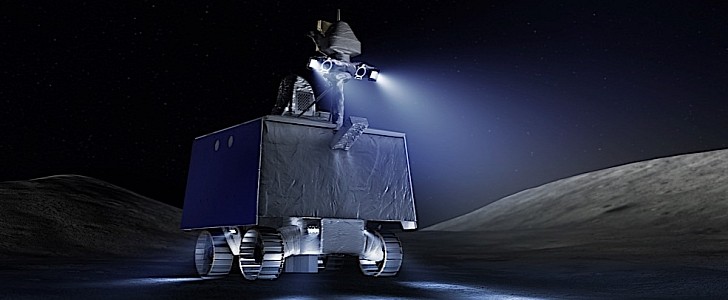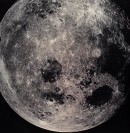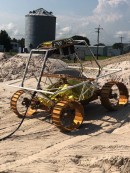There are just a few human-made pieces of machinery, including rovers, on the surface of the Moon, either automated contraptions sent there for whatever reason by the spacefaring nations of our world, or four-wheeled machines designed to transport people around. NASA can't take full credit for any of them.
The American space agency is used to tasking other companies with making such things, and for the Lunar Roving Vehicle, for instance, the most prominent of Moon vehicles, Boeing was chosen as a one to implement it. On the other hand, the other such machines on sight are of either Soviet or Chinese make.
The upcoming missions of the Artemis program will finally put the NASA name on the Moon as a maker of rovers. as they will include something called Volatiles Investigating Polar Exploration Rover (VIPER). NASA describes it as its first lunar mobile robot, and it just passed a major milestone earlier this week.
After not long ago the space agency shared glimpses of the VIPER as a prototype, it now announced the hardware passed its Critical Design Review (CDR), meaning it has “a completed design and has been approved by an independent NASA review board.“ Most importantly, it also means construction of the machine can begin.
NASA plans to have the robot, which will be managed by the agency's very own Ames Research Center, ready for launch by 2023. The size of a golf cart, comprising some 100 parts and weighing 600 pounds (272 kg) VIPER will be tasked with finding traces of water at the lunar South Pole.
That’s the general area where the first Artemis astronauts will land, and probably the place where eventually a Moon base will be established, so finding resources such as water on site could prove essential for the success of such endeavors.
The upcoming missions of the Artemis program will finally put the NASA name on the Moon as a maker of rovers. as they will include something called Volatiles Investigating Polar Exploration Rover (VIPER). NASA describes it as its first lunar mobile robot, and it just passed a major milestone earlier this week.
After not long ago the space agency shared glimpses of the VIPER as a prototype, it now announced the hardware passed its Critical Design Review (CDR), meaning it has “a completed design and has been approved by an independent NASA review board.“ Most importantly, it also means construction of the machine can begin.
NASA plans to have the robot, which will be managed by the agency's very own Ames Research Center, ready for launch by 2023. The size of a golf cart, comprising some 100 parts and weighing 600 pounds (272 kg) VIPER will be tasked with finding traces of water at the lunar South Pole.
That’s the general area where the first Artemis astronauts will land, and probably the place where eventually a Moon base will be established, so finding resources such as water on site could prove essential for the success of such endeavors.













